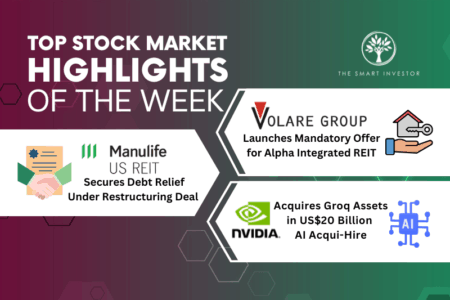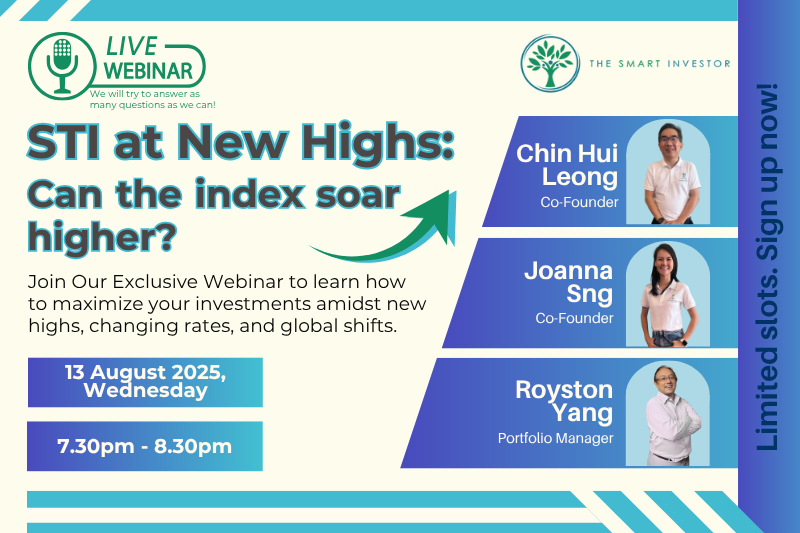Airline pilots use them to prevent accidents.
Surgeons use them to save lives.
Yet most investors — managing their life savings — wing it without using one.
I’m talking about checklists.
Here’s what most people miss: not all checklists are created equal.
Atul Gawande, author of The Checklist Manifesto, found that checklists do more than just remind us of essential steps — they make those steps explicit and create a discipline that leads to higher performance.
He identified two key variants that work completely differently.
With a READ-DO checklist, you check off tasks as you carry them out — much like following a recipe.
But with a DO-CONFIRM checklist, you perform your work from memory and experience, then pause to verify everything was done.
When it comes to investing, the DO-CONFIRM approach is superior, in my view.
Why?
Because investing isn’t about following steps mechanically.
You need to understand the business first, make your judgment, then use the checklist to confirm you haven’t missed anything crucial.
1. Can You Explain the Business to a 12-Year-Old?
My favourite way to learn about a new company is to hear management explain it in their own words.
Interviews, podcasts, or investor presentations work best — they are blank canvases where CEOs articulate what makes their business special, using their own vocabulary.
This is where a READ-DO checklist fails investors.
It forces businesses into tiny pigeonholes, like trying to understand a painting by looking through pinholes in a piece of paper.
You see fragments, but miss the masterpiece.
Here’s a key test: if you can explain how a company makes money in terms simple enough for a 12-year-old, you’re on the right track.
And here’s my secret — I often do this without looking at the financial statements first.
Understanding the business model comes before the numbers.
2. Do the Numbers Tell the Same Story as Management?
Once you understand the business narrative, the financial statements should confirm it.
Looking at numbers without understanding the business is like reading a musical score without hearing the melody.
You get the technical details but miss what makes it sing.
Start with revenue: the lifeblood of any business.
Without revenue, there is no business.
A company can cut costs to boost profits temporarily, but long-term growth always comes back to growing the top line.
If management says they’re winning market share but revenues are flat, something’s off.
If they claim pricing power but margins are shrinking, dig deeper.
The numbers should validate the story, not contradict it.
3. Can the Business Finance its Own Growth?
Growing revenue doesn’t happen by magic — it takes investment.
Here’s the crucial question: where does that investment money come from?
In the best businesses, growth pays for itself.
They generate enough cash from existing operations to fund expansion without outside help.
This is what free cash flow tells you: it’s the money left over after a company has spent what it needs to maintain and grow its business.
Think of it this way: if a restaurant chain wants to open new locations, ideally the cash from existing restaurants should fund that expansion.
If there’s money left over after all that spending, you’ve found a business with real strength.
4. Can the Balance Sheet Handle the Weight?
Sometimes businesses need external funding to seize opportunities.
That’s when they either borrow money or issue shares.
Neither is ideal, but debt is particularly dangerous if overdone.
The owner of Japanese eyewear chain OWNDAYS put it brilliantly: taking on too much debt is like driving an overloaded truck.
You’re too heavy to gain speed, too hard to steer, burning extra fuel, and one sharp curve away from toppling over.
A strong balance sheet isn’t just about avoiding bankruptcy — it’s about maintaining the agility to compete and the resilience to survive unwelcome surprises.
5. Does the Business Have Multiple Ways to Win?
If you bought Amazon (NASDAQ: AMZN) at its IPO in 1997, you owned an online bookstore. Period.
Today?
That same investment would now give you the world’s largest e-commerce platform, AWS (cloud computing), a thriving advertising business rivaling Google and Meta Platforms (NASDAQ: META), Prime subscriptions, logistics services, and more.
That’s optionality — multiple pathways to growth beyond the original business.
The best investments aren’t one-trick ponies.
They’re platforms that can expand in directions you couldn’t initially imagine.
A key question to ask: Does the company have assets such as customer relationships, data, technology, or distribution — that could power entirely new business lines?
6. Did You Check for Concentration Risk Beyond the Obvious?
Concentration risk hides at multiple levels.
Consider these questions: Do a handful of customers represent the bulk of its revenue?
That’s betting on the company maintaining good relations with its clients.
Does the company rely on single-source suppliers?
One disruption could cripple operations.
Does the vast majority of revenue come from one market?
You’re exposed to that region’s currency, regulations, and economy.
The concentration that kills is rarely obvious — it’s the dependency buried several layers deep.
7. Can the Business Survive Your Worst-Case Scenario?
Forget hypothetical stress tests — we just lived through real ones.
The past five years delivered a brutal combination nobody predicted: a global pandemic that shut down entire economies, interest rates rocketing from zero to 5 per cent, and escalating trade wars with tariffs reshaping supply chains.
This wasn’t scenario planning. This was reality.
Companies that not only survived but grew through this chaos — like Booking Holdings (NASDAQ: BKNG) weathering travel’s complete shutdown, or Microsoft (NASDAQ: MSFT) thriving despite supply chain disruptions — proved their resilience with actual results, not projections.
Real-world data beats any spreadsheet model.
Look for businesses that already passed the ultimate stress test: the one nobody saw coming.
8. Have You Admitted What You Don’t Know?
Carl Richards nailed it: “Risk is what’s left when you think you’ve thought of everything.”
Write down what you don’t know about your investment.
If the list is short, you’re overconfident.
If you can’t identify any risks, you haven’t looked hard enough.
Every business has vulnerabilities: technological disruption, regulatory changes, competitive threats, key person dependencies and more.
Humility isn’t weakness. It’s protection against expensive surprises.
Get Smart: The Art of Being Less Wrong
Everyone makes mistakes.
Ask the late Charlie Munger, his secret wasn’t brilliance: “It’s remarkable how much long-term advantage people like us have gotten by trying to be consistently not stupid, instead of trying to be very intelligent.”
Your checklist is that advantage in practice.
This is just the start.
Add to it with every expensive mistake, every hard-won success.
Like pilots who refine their checklists with experience, your list should evolve into a personal investing autobiography.
The market doesn’t require genius.
It rewards discipline and punishes carelessness.
A good checklist won’t make you Warren Buffett, but it will prevent you from being consistently wrong.
And that’s more than enough.
Many investors think DeepSeek lowering AI costs means less revenue for tech companies. But that’s not the full story, and believing it could cost you. In our latest free report, we unpack a surprising insight from a top tech CEO who explains why lower AI costs may actually drive more tech spending, not less — and he’s got the numbers to prove it. If you’ve misunderstood this trend, you could miss out on some of the biggest investment opportunities. Click here now to access “How GenAI is Reshaping the Stock Market” today to get the full breakdown.
Follow us on Facebook, Instagram and Telegram for the latest investing news and analyses!
Disclosure: Chin Hui Leong owns shares of Alphabet, Amazon, Booking Holdings, and Meta Platforms.






